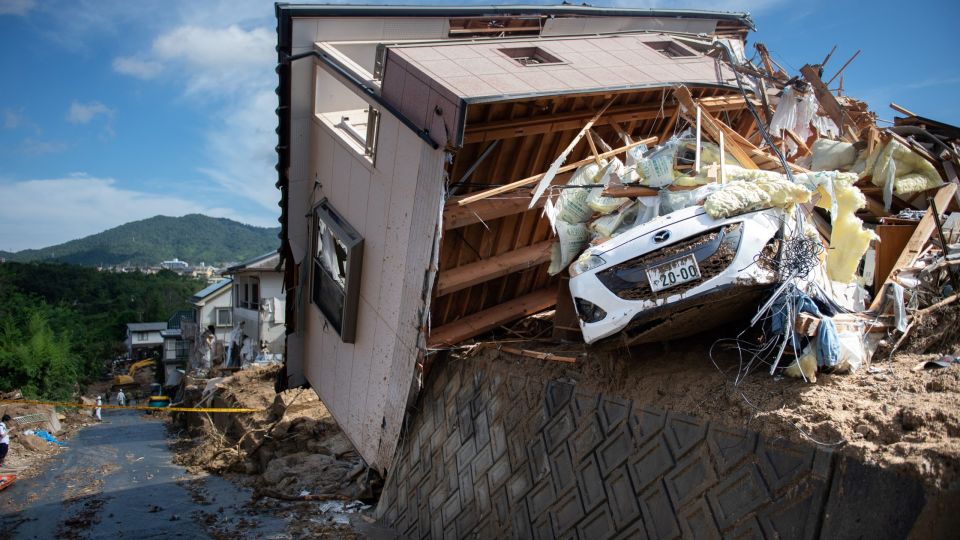July 10, 2018
Tens of thousands displaced; heatstroke advisories out as mercury soars to 35 degrees Celcius.
The death toll from days of torrential rain and landslides in western Japan topped 120 yesterday, with scores still missing, in what has been recognised by the government as a “serious disaster”.
At least 123 people were confirmed dead, two were in cardiac arrest and a further 61 were unaccounted for, according to a tally by public broadcaster NHK at 10pm local time. Tens of thousands remained displaced.
Prime Minister Shinzo Abe called off his eight-day trip starting tomorrow to Belgium, France, Saudi Arabia and Egypt in order to oversee the recovery response for Japan’s worst flood disaster since 1983.
Dozens are said to be stranded inside their homes, with access roads having been cut off by flooding, local media reported yesterday, and shell-shocked residents are bracing themselves for further bad news.
Though the skies have cleared, the Meteorological Agency has warned the threat of mudslides remains high. Torrential rain alerts have been replaced by heatstroke advisories, with temperatures soaring to 35 deg C in several areas.
Over 74,000 personnel, including police officers, firefighters and Self-Defence Force soldiers, have been tapped for a massive search-and-rescue operation, with news channels showing dramatic footage of residents being airlifted to safety from their rooftops.
Emergency personnel have been tasked with distributing food and water, and are setting up temporary toilets and installing air-conditioners at evacuation centres in the worst-hit areas.
These include Hiroshima, Okayama and Ehime prefectures, where 44, 36 and 25 people have died, respectively. Okayama prefecture’s Kurashiki city alone accounted for 29 deaths, the majority of them from Mabi district, where a third of the area has been submerged and 4,600 homes hit.
The government has termed the heavy rains that battered central and western Japan from last Thursday through Sunday as “historic”. The deluge set records by up to three times the average monthly rainfall for July in several areas, with at least 93 locations reporting record rainfall.
At one point, evacuation orders or advisories were issued for up to 5.9 million people in 19 prefectures, according to a tally by Kyodo News.
About 10,000 people in 12 prefectures remain in evacuation centres, public broadcaster NHK said last night.
Mr Abe said the government will provide financial recovery aid to the affected areas, as he convened an emergency task force meeting for the second day in a row.
The rains have damaged key infrastructure such as highways and railways in the affected regions. As of noon yesterday, electricity to about 11,300 households remained cut off, the Ministry of Economy, Trade and Industry said.
Meanwhile, the rains also shuttered factories, paralysed logistics supply chains and closed businesses including 24-hour convenience stores. Among those affected were automobile firms Daihatsu, Mazda and Toyota, as well as materials engineering companies Teijin and Oji Materia.
Asahi Shuzo, the company that produces the popular “Dassai” brand of sake that also ships to Singapore, has said production and export will be hit for several months.
The brewery is flooded, damaging raw rice stored in its warehouse, and power has not been wholly restored, president Kazuhiro Sakurai told NHK.
“It is in a state where sake production is impossible,” he said. “But while we have suffered major damage, all our employees will work as quickly as possible so that we can… resume shipments soon.”


